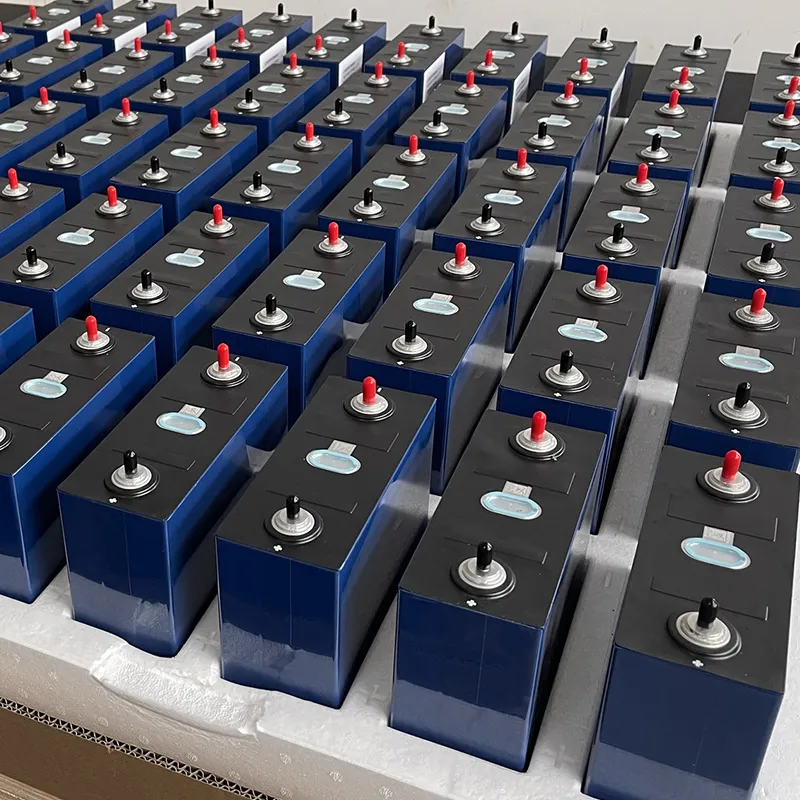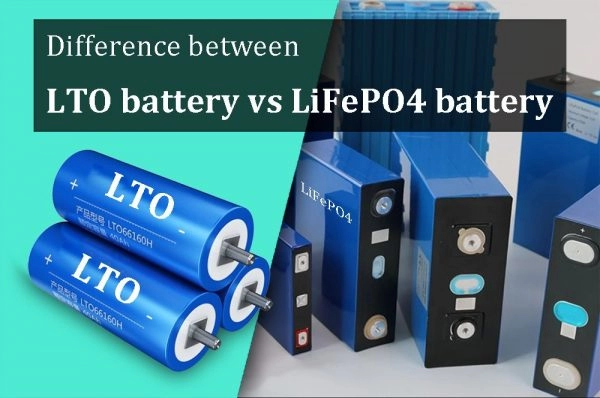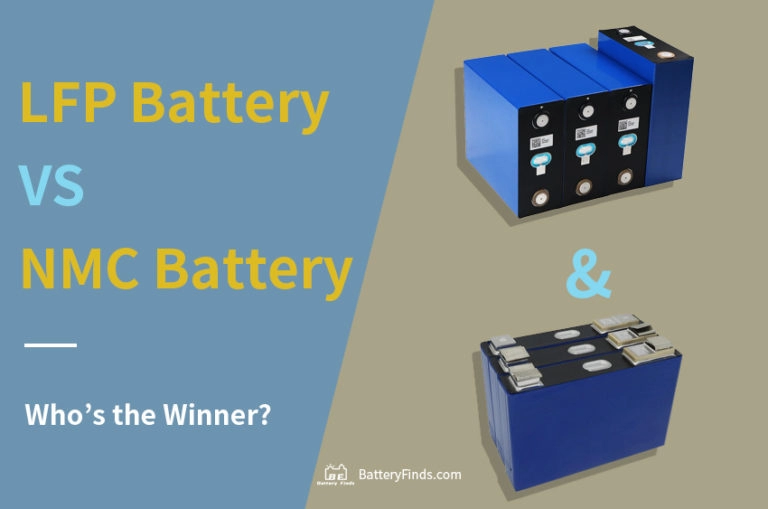In the rapidly evolving landscape of energy storage, two types of batteries have gained considerable attention: Lithium Iron Phosphate (LFP) batteries and Lithium Titanate (LTO) batteries. Both offer unique advantages and limitations, making them ideal for different applications. This guide will delve into the chemistry, performance, lifespan, safety, and cost-effectiveness of LFP and LTO batteries, to help you determine which technology best suits your needs.
Part 1: What are LFP Batteries?
Lithium Iron Phosphate (LFP) batteries are a type of lithium-ion battery known for their exceptional safety and stability. They use lithium iron phosphate as the cathode material and graphite as the anode. This combination results in batteries with lower energy density compared to other lithium-ion batteries but offers excellent thermal stability and long lifespan.
Key Characteristics of LFP Batteries
- Enhanced Safety: LFP batteries are less prone to thermal runaway compared to other lithium-ion batteries, making them safer. This safety feature is particularly important in applications where risk management is critical.
- Cycle Life: Typically, LFP batteries offer a longer cycle life, often exceeding 2,000 cycles under ideal conditions. This durability ensures minimal degradation over numerous charge and discharge cycles.
- Energy Density: LFP batteries have an energy density ranging from 90–160 Wh/kg, which is lower than other lithium-ion batteries. However, they compensate with their robustness, making them suitable for applications where weight is not a primary concern.
- Cost: Due to the widespread availability of iron and phosphate, LFP batteries are often more affordable than other lithium-ion options. This cost advantage makes them particularly well-suited for large-scale applications.
- Environmental Impact: The materials used in LFP batteries, namely iron and phosphate, are more environmentally friendly and abundant compared to some other lithium-ion technologies. They are also non-toxic, contributing to more environmentally sustainable solutions.
Part 2: What are LTO Batteries?
Lithium Titanate (LTO) batteries use lithium titanate as the anode material. This unique composition allows LTO batteries to charge and discharge at extremely high rates, making them ideal for applications that require rapid energy transfer.
Key Characteristics of LTO Batteries
- Ultra-Fast Charging: One of the most notable features of LTO batteries is their ability to charge in minutes rather than hours. This makes them particularly well-suited for time-critical applications, such as public transportation systems.
- Cycle Life: LTO batteries can achieve over 10,000 charge cycles, making them highly suitable for applications involving frequent cycling. Their exceptional longevity reduces the need for frequent replacements.
- Temperature Range: LTO batteries perform well even in a wide temperature range, both hot and cold. This versatility makes them suitable for a wide range of environmental conditions.
- Energy Density: LTO batteries have a lower energy density, typically around 70-90 Wh/kg. Consequently, they require more space to store the same amount of energy as LFP batteries, which can limit their use in applications where compact size is critical.
- Safety Features: LTO batteries are known for their excellent thermal stability, but overcharging poses a risk if not properly managed. A well-designed Battery Management System (BMS) is crucial to ensure their safety.
Part 3: Key Differences Between LFP and LTO Batteries
To highlight the key differences, let’s compare the characteristics of LFP and LTO batteries.
- Energy Density: LFP batteries offer a higher energy density (90-160 Wh/kg) compared to LTO batteries (70-90 Wh/kg). This means LFP batteries can store more energy in a smaller and lighter space, making them more suitable for applications where weight and size are constraints.
- Cycle Life: LTO batteries significantly outperform LFP batteries in terms of cycle life, often exceeding 10,000 cycles, whereas LFP batteries typically offer around 2,000 cycles. The superior lifespan of LTO batteries makes them ideal for applications involving frequent charging and discharging.
For further details on the Advantages of Lithium Iron Phosphate Batteries, please refer to our detailed guide.
LFP and LTO Batteries: A Comprehensive Comparison
In recent years, lithium-based batteries have become increasingly popular in various industries due to their exceptional energy storage capabilities. Among the most commonly used lithium-ion battery types, LFP (Lithium Iron Phosphate) and LTO (Lithium Titanate Oxide) are two prominent examples. While both battery types offer unique advantages, their differences may make them more suitable for different applications. Below, we compare the key characteristics, advantages, and disadvantages of LFP and LTO batteries to help you make an informed decision.
Key Characteristics of LFP and LTO Batteries
Energy Density
- LFP Batteries: Known for their energy density ranging from 90 to 160 Wh/kg. While they may not offer the highest energy density, they strike a good balance between performance and cost.
- LTO Batteries: LTO batteries have a lower energy density, ranging from 70 to 90 Wh/kg, requiring more space to store the same amount of energy compared to LFP batteries.
Cycle Life
- LFP Batteries: Typically offer approximately 2,000 charge cycles, making them well-suited for applications that do not require frequent charging.
- LTO Batteries: LTO batteries excel in cycle life, exceeding 10,000 cycles, ensuring longevity, making them ideal for applications that demand frequent cycling.
Charging Speed
- LFP Batteries: These batteries support moderate charging speeds, meaning a full charge may take several hours.
- LTO Batteries: LTO batteries excel in ultra-fast charging, allowing them to be fully charged in a matter of minutes—perfect for time-sensitive applications.
Temperature Range
- LFP Batteries: Perform best at moderate temperatures, but their efficiency may decrease in extreme conditions.
- LTO Batteries: Designed for extreme environments, LTO batteries can operate effectively across a wide temperature range, making them adaptable in harsh settings.
Safety
- LFP Batteries: LFP batteries are known for their high thermal stability, making them less prone to overheating, reducing the risk of fire.
- LTO Batteries: While LTO batteries also exhibit good thermal stability, proper management is still necessary to prevent potential safety issues such as overcharging.
Cost
- LFP Batteries: LFP batteries generally have a lower initial cost due to the abundance of raw materials, making them accessible to various industries.
- LTO Batteries: LTO batteries come with a higher upfront cost, primarily due to the use of specialized materials.
Environmental Impact
- LFP Batteries: Made from more abundant and environmentally friendly materials, LFP batteries are considered more sustainable.
- LTO Batteries: The materials used in LTO batteries are less common, potentially raising concerns about their long-term sustainability.
Comparison Summary: LFP vs. LTO Batteries
| Characteristic | LFP Battery | LTO Battery |
|---|---|---|
| Energy Density | 90 – 160 Wh/kg | 70 – 90 Wh/kg |
| Cycle Life | ~2,000 Cycles | >10,000 Cycles |
| Charging Speed | Moderate | Ultra-Fast |
| Temperature Range | Moderate | Wide Range (Extreme Conditions) |
| Safety | High Thermal Stability | Good Thermal Stability |
| Cost | Lower Initial Cost | Higher Initial Cost |
| Environmental Impact | More Sustainable | Less Sustainable |
Pros and Cons
Pros of LFP Batteries:
- High Thermal Stability: Their inherent stability reduces the risk of overheating.
- Long Cycle Life: LFP batteries are well-suited for applications with less frequent charging needs.
- Cost-Effective: Lower initial costs make them accessible to various industries.
- Good Performance at Moderate Temperatures.
Cons of LFP Batteries:
- Lower Energy Density: Requires more space compared to other battery technologies.
- Slower Charging Speed: Not ideal for applications requiring quick energy replenishment.
Pros of LTO Batteries:
- Ultra-Fast Charging: LTO batteries are perfect for time-sensitive applications where rapid charging is crucial.
- Extremely Long Cycle Life.
- Excellent Extreme Temperature Performance: LTO batteries are versatile and stable even in harsh environments.
Cons of LTO Batteries:
- Higher Initial Cost: Higher upfront investment due to the use of specialized materials.
- Lower Energy Density: Requires a larger volume for the same energy storage needs compared to some other battery technologies.
Applications of LFP and LTO Batteries
Applications of LFP Batteries:
- Electric Vehicles (EVs): LFP batteries are widely used in electric vehicles due to their cost-effectiveness and safety features, minimizing the risk of battery fires.
- Energy Storage Systems (ESS): LFP batteries are well-suited for residential and commercial energy storage solutions, storing excess solar energy.
- Power Tools: Commonly used in power tools for their safety features and longer lifespan compared to traditional lead-acid batteries.
- Grid-Scale Energy Storage Solutions: Used in renewable energy systems to store energy generated from wind or solar power, helping to stabilize the grid during peak demand.
Applications of LTO Batteries:
- Public Transportation: Buses and trams benefit from the rapid charging capabilities of LTO batteries, allowing for quick recharges during brief stops or layovers.
- Grid Energy Storage: Ideal for grid stabilization by balancing energy supply and demand.
Conclusion
LFP batteries are cost-effective and safe, making them suitable for applications like electric vehicles and grid storage that require long-term, infrequent charging. On the other hand, LTO batteries excel in environments demanding ultra-fast charging, long cycle life, and extreme temperature performance, making them ideal for public transportation and grid stabilization applications.
To choose the best battery technology, consider the specific needs and operational goals of your industry.
Military Applications and Standby Power Systems
Lithium batteries play a critical role across various sectors, particularly in military applications and standby power systems.
Military Applications
In military operations, rapid deployment is critical, and lithium batteries are commonly used in equipment requiring high reliability and durability to withstand harsh environments. These batteries ensure continuous and stable operation even in extreme conditions.
Backup Power Systems
Lithium batteries are also well-suited for backup power systems, especially where rapid response is essential during power outages or emergencies. They provide a reliable energy source in such scenarios, which is essential for maintaining critical operations.
Frequently Asked Questions (FAQs)
What are the main differences between LFP and LTO batteries?
The main differences between LFP (Lithium Iron Phosphate) and LTO (Lithium Titanate) batteries are their energy density, cycle life, charging speed, and overall cost. LFP batteries offer higher energy density and lower upfront cost, while LTO batteries excel in fast charging capabilities and ultra-long lifespan.
Which battery has a longer lifespan?
LTO batteries generally have a much longer lifespan than LFP batteries, lasting over 10,000 charge cycles compared to around 2,000 cycles for LFP. This makes LTO a more sustainable option in the long term.
Are LFP batteries safer than other lithium-ion batteries?
Yes, LFP batteries are considered safer compared to other lithium-ion chemistries. They have higher thermal stability and a lower risk of thermal runaway, making them a safer choice for various applications.
Can I use LTO batteries in electric vehicles?
Yes, LTO batteries are suitable for use in electric vehicles, especially where fast charging is required. However, due to their higher cost, LTO batteries are not as commonly used in EVs as LFP or other lithium-ion batteries.
Which battery is more cost-effective?
While LFP batteries have a lower initial cost, LTO batteries can be more cost-effective in the long term. This is because they have a longer lifespan, reducing the need for replacements and providing better long-term value.
Related Tags
- Ufine
- Battery Industry Content Creator










